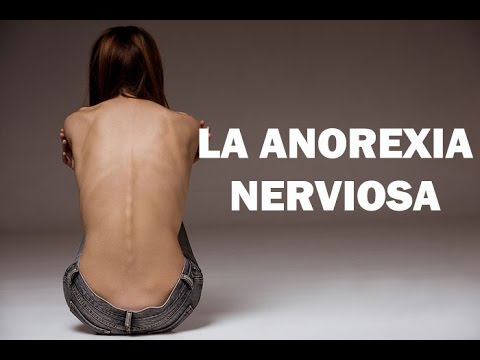Anorexia Nervosa Case presentation
Keywords:
Anorexia nervosa, Adolescence, Eating behavior.Abstract
Introduction: eating disorders (eating disorders) usually appear during adolescence or early adulthood. The ACTs currently represent, according to the World Health Organization (WHO), the most important health problem of humanity, both by the number of people affected that is increasing, as by the deaths it causes. Statistics show that more and more adolescents are prone to these eating disorders that bring serious complications to their health. Anorexia nervosa occurs with high frequency in consumer societies, highly developed countries, however in recent years there are cases in our society that call attention to the severity not only of the disorder but also because adolescence is a group Very vulnerable to suffer it. The case presented shows the poor perception of the family about the risk and consequences of these disorders.
Objective: to describe the characteristics that occur in a teenager with Anorexia nervosa.
Case presentation: 14-year-old female teenager with notable weight loss due to self-imposed diets for a year, shows marked rejection of food and constantly shows fear of gaining weight. Perform intense physical exercises to combat the possibility of gaining weight. Sometimes decayed, not very sociable, intense worries, anxiety, palmar hyperhidrosis. He is presenting menstrual, cardiovascular and digestive disorders that cause concern in the family and seek medical help.
Conclusions: it is clear that problems related to the family environment, overprotection and other psychological factors such as premorbid personality are involved in the appearance of this disorder. It is characterized by a distortion of body image and can have very serious consequences for the health of those who suffer it.
Downloads
References
1. Calderón Ortíz BP, Felipe Rodríguez A. Anorexia Nerviosa en la adolescencia: Diagnóstico, bases neurológicas y moleculares. Revista Salud Bosque 2016; 6(2): 41-48.
2. Rodríguez López E. Trastornos de la conducta alimentaria en jóvenes de México. Multidisciplinary Health Research [Internet]. 2017 [citado 8/5/2019]; 2(1). Disponible en: http://www.revistas.ujat.mx/index.php/MHR/article/view/2413/1862
3. Gabler G, Olguín P, Rodríguez A. Complicaciones médicas de los trastornos de la conducta alimentaria. Rev Médica Clínica Las Condes 2017; 28(6): 893-900.
4. Sainos López DG, Sánchez Morales MT, Vázquez Cruz E, Gutiérrez Gabriel I. Funcionabilidad familiar en pacientes con anorexia nerviosa y bulimia. Rev Atención Familiar 2015; 22(2): 54-57.
5. Bravo Rodríguez M, Pérez Hernández A, Plana Bouly R. Anorexia nerviosa: características y síntomas. Rev Cubana Pediatr 2000; 72(4): 300-5.
6. Jiménez Ortega A, González Iglesia M. Problemática nutricional de la población femenina adolescente. Rev Nutrición Hospitalaria 2015; 32(1): 5-9.
7. Kaplan HI, Sadok BJ. Anorexia nerviosa. En: Comprendio de Psiquiatría. 2da. ed. La Habana: Instituto del Libro; 1987. P. 517-20.
8. Kessel B, Mehler P. Hipotensión ortostática y taquicardia en pacientes adolescentes con anorexia nervosa: un indicador de lo grave de la enfermedad. Eating Disorders Review [Internet]. 2018 [citado 5/8/2019]; 29(4). Disponible en: https://eatingdisordersreview.com/wp-content/uploads/2018/10/nl_edr_29_4print-sp.pdf
9. Chunga Silva L. Trastorno de la conducta alimentaria y alexitimia en adolescentes femeninas escolares. Rev Psicología 2015; 17(2): 116-127.
10. González Quiñones J, Martínez Caro D, Martínez Muñoz S, Pinzón Ramírez J. Relación entre trastorno de conducta alimentaria y género y familia en adolescentes escolarizados, Suba (Bogotá). Carta Comunitaria 2017; 25(143): 29-5.

Downloads
Published
How to Cite
Issue
Section
License
Avisos de derechos de autor propuestos por Creative Commons
1. Política propuesta para revistas que ofrecen acceso abierto
Aquellos autores/as que tengan publicaciones con esta revista, aceptan los términos siguientes:- Los autores/as conservarán sus derechos de autor y garantizarán a la revista el derecho de primera publicación de su obra, el cuál estará simultáneamente sujeto a la Licencia de reconocimiento de Creative Commons que permite a terceros compartir la obra siempre que se indique su autor y su primera publicación esta revista.
- Los autores/as podrán adoptar otros acuerdos de licencia no exclusiva de distribución de la versión de la obra publicada (p. ej.: depositarla en un archivo telemático institucional o publicarla en un volumen monográfico) siempre que se indique la publicación inicial en esta revista.
- Se permite y recomienda a los autores/as difundir su obra a través de Internet (p. ej.: en archivos telemáticos institucionales o en su página web) antes y durante el proceso de envío, lo cual puede producir intercambios interesantes y aumentar las citas de la obra publicada. (Véase El efecto del acceso abierto).






